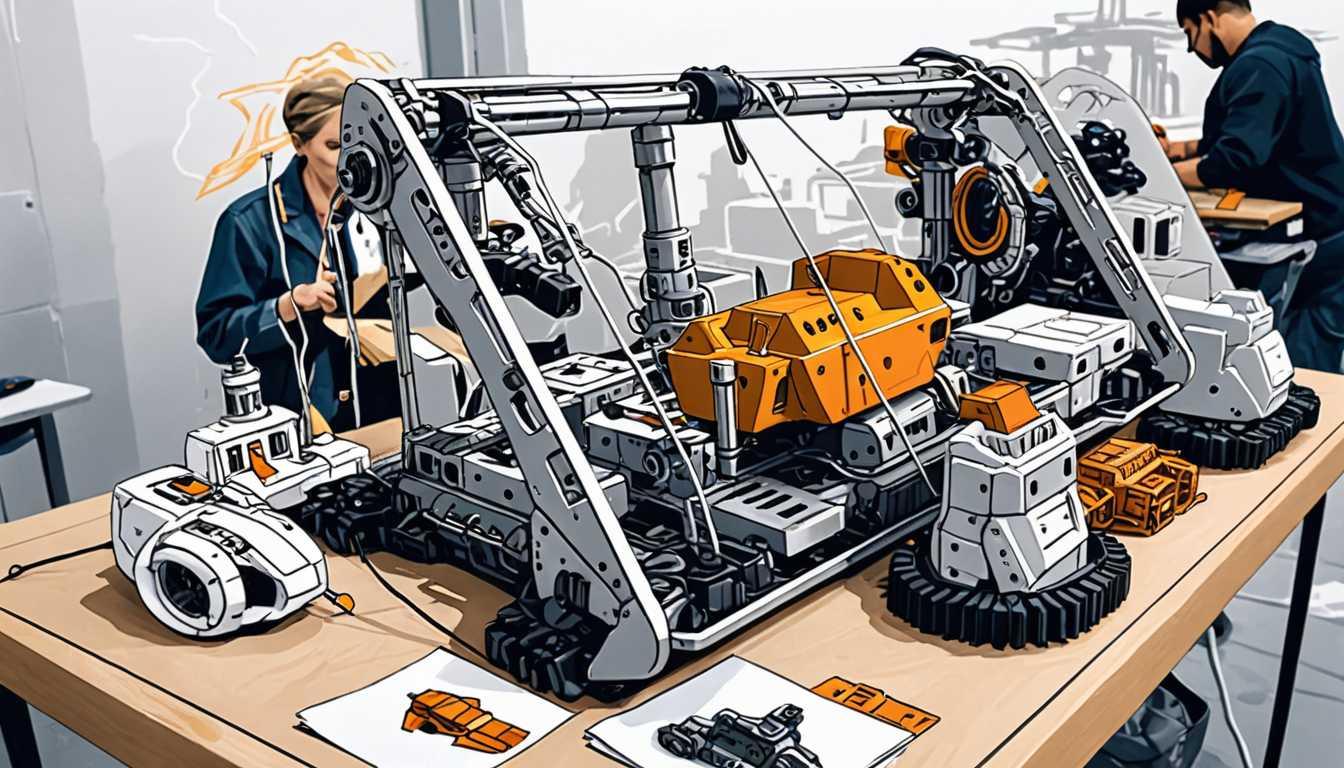Lasers: The Future of Metalwork
October 2023
University of Cambridge
Introduction
Imagine transforming steel with just a laser beam, like a futuristic blacksmith! Researchers at the University of Cambridge have cracked the code to 'heat and beat' 3D-printed steel, potentially slashing costs and revolutionizing the metal manufacturing world. Their secret recipe allows for intricate shapes and tailor-made properties in metals, without the old-school hammering. Dive into this cutting-edge study, reported in Nature Communications, and see how lasers are paving the way for a more sustainable and efficient future in 3D printing. Let's melt into the details!
READ FULL ARTICLEWhy It Matters
Discover how this topic shapes your world and future
Shaping the Future, One Layer at a Time
Imagine a world where creating complex metal parts for everything from cars to bridges is faster, cheaper, and more sustainable. That's not science fiction; it's the potential future thanks to a groundbreaking method developed by researchers for 3D printing metal. This new technique, which cleverly uses lasers to 'heat and beat' metal, is revolutionizing how we think about manufacturing. It combines the intricate design possibilities of 3D printing with the ability to tailor the metal's properties, like strength and flexibility, without the traditional, costly methods. For you, this could mean living in a world with smarter, greener technology made possible by advances in how we create. It's about making the impossible, possible, and it all starts with reimagining how we use materials. This innovation not just paves the way for more efficient manufacturing but also opens doors to a sustainable future where resources are used wisely. Imagine being part of this transformative journey, where your curiosity and creativity could contribute to shaping a better world.
Speak like a Scholar
Additive Manufacturing
This is a fancy term for 3D printing. Instead of carving or sculpting an object out of a block of material, 3D printing adds material layer by layer to create the object.
Alloy
A mixture of two or more elements, where at least one is a metal. Alloys are used to enhance the properties of a material, like making it stronger or more resistant to rust.
Microstructure
Think of this as the tiny, often microscopic, arrangement of particles within a material. This structure can greatly influence a material's properties, such as its strength or flexibility.
Laser Sintering
A specific 3D printing technique where a laser is used to melt and fuse material powder together. It's like using a super-focused, high-powered light beam to build objects from dust!
Brittle
If something is brittle, it means it's hard but likely to break or shatter easily. Brittle materials can withstand compressive forces but fail under tension.
Sustainability
This is all about using resources in a way that does not harm our environment or deplete the materials for future generations. It's like making sure there's enough pie for everyone, forever.
Independent Research Ideas
The Evolution of Metalworking
Investigate how metalworking techniques have evolved from ancient times to the present, focusing on the transition from traditional methods to modern 3D printing technologies. This could reveal fascinating insights into human ingenuity and resourcefulness.
Alloys of the Future
Dive into the world of alloys and explore how new combinations could be created for specific purposes, such as extreme durability or lightweight construction. You could be on the brink of discovering the next superhero material!
Environmental Impact of Manufacturing
Analyze the sustainability of traditional vs. 3D printing methods in metal manufacturing. This project could highlight paths toward greener production techniques and the role of innovation in protecting our planet.
The Art and Science of Laser Sintering
Explore the science behind laser sintering, including the physics of lasers and material science. Understanding this could unlock new possibilities in manufacturing and art, blending creativity with technology.
From Concept to Reality
Investigate the process of turning a design concept into a physical object using 3D printing. This journey could reveal the challenges and triumphs of bringing imaginative ideas to life, inspiring future inventors and creators.
Related Articles

Hydrogel: The Heat-Loving Moisture Magnet
April 2023
Massachusetts Institute of Technology (MIT)

Mini Pump, Mega Impact: MIT's Innovation
April 2023
Massachusetts Institute of Technology (MIT)

Revolutionizing Aerospace with Ultrasound Tech
April 2024
University of Bristol

Membranes: Future's Sustainability Heroes
March 2023
Phys Org

Sustainability Quest: Merging Science & Systems
November 2023
Massachusetts Institute of Technology (MIT)